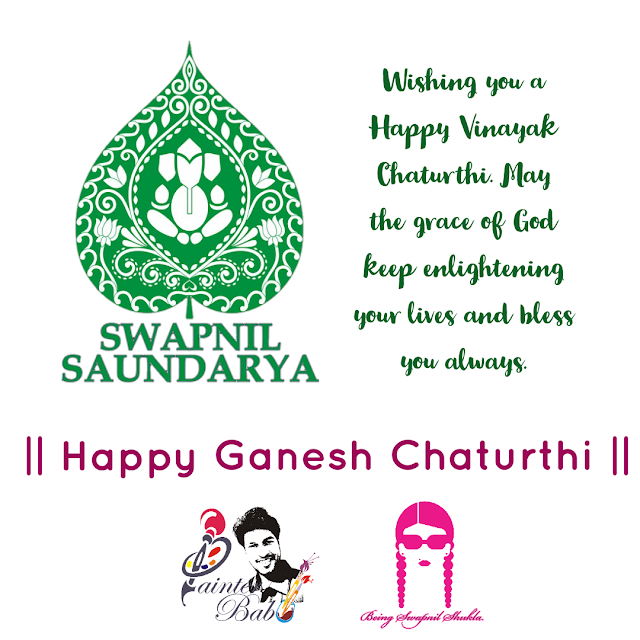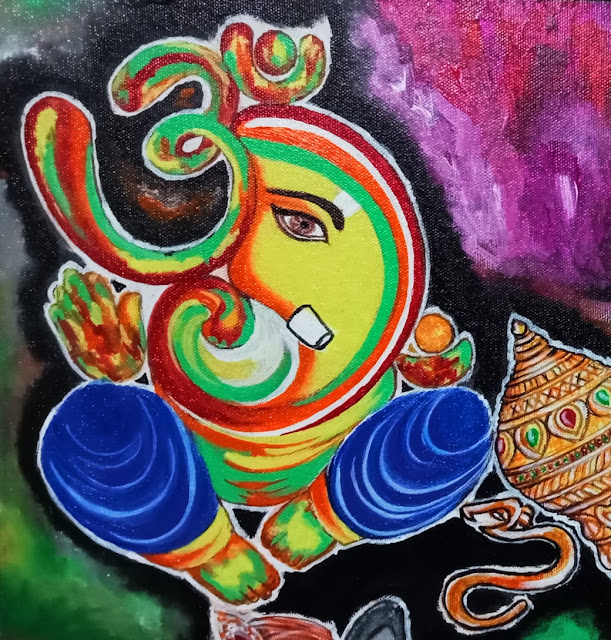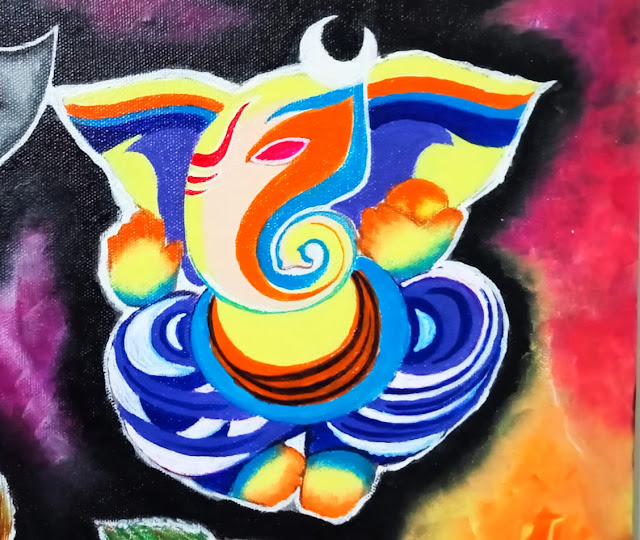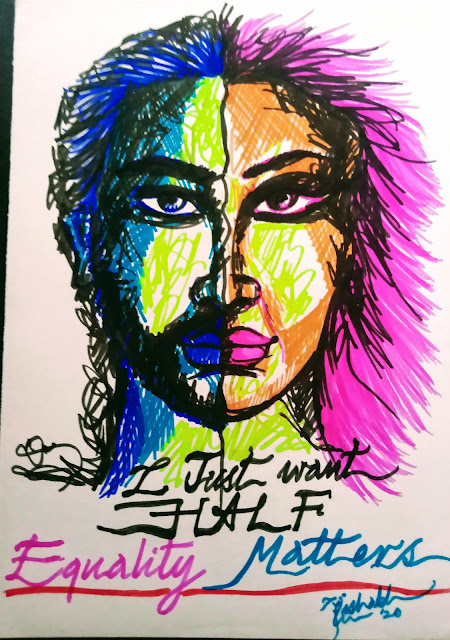Happy Ganesha Chaturthi | SwapnIl Saundarya Ezine
SWAPNIL SAUNDARYA e-zine
Vol- 10, Year - 2022
Published by
Aten Publishing House
'The Bold Brigade’, a collective to celebrate the Inclusive Power of Arts.
*********
The name Ganesha is a Sanskrit compound, joining the words gana meaning a ‘group, multitude, or categorical system’ and isha meaning ‘lord or master’. Lord Ganesha is described as Ajam Nirvikalpam Niraakaaramekam. This means that Ganesh is never born. He is Ajam (unborn), Niraakaar (formless) and Nirvikalpa (attributeless). Ganesha symbolises the consciousness which is omnipresent.
Ganesha Chaturthi is celebrated on the day on which Lord Ganesha is believed to bestow his presence on earth for all his devotees. The annual festival honours Ganesha for ten days typically falls in late August or early September. The festival begins with people bringing in clay idols of Ganesha, symbolising the god’s visit. The festival culminates on the day of Ananta Chaturdashi, when the idols (murtis) are immersed in the most convenient body of water. Some families have a tradition of immersion on the 2nd, 3rd, 5th, or 7th day. In 1893, Lokmanya Tilak transformed this annual Ganesha festival from private family celebrations into a grand public event. He did so “to bridge the gap between the Brahmins and the non-Brahmins and find an appropriate context in which to build a new grassroots unity between them” in his nationalistic strivings against the British in Maharashtra. Because of Ganesha’s wide appeal as “the god for Everyman”, Tilak chose him as a rallying point for Indian protest against British rule. Tilak was the first to install large public images of Ganesha in pavilions, and he established the practice of submerging all the public images on the tenth day. Today, Hindus across India celebrate the Ganapati festival with great fervour, though it is most popular in the state of Maharashtra.
Lord Ganesha is a popular figure in Indian art. Unlike those of some deities, representations of Ganesha show wide variations and distinct patterns changing over time. He may be portrayed standing, dancing, heroically taking action against demons, playing with his family as a boy, or sitting down on an elevated seat, or engaging in a range of contemporary situations.
Ganesha body signify:
Head= atmaan
Body= maya
Elephant head= wisdom
Trunk= Om
Upper right hand= eternal path and a remover of obstacles
Left hand noose= gentle implement to capture all difficulties
The broken tusk in lower right hand, it broke while writing Mahabharata, it symbolises sacrifice, a rosary in other hand, stands for pursuit of knowledge and that knowledge should be continuous.
Laddoo= sweetness of atman (soul), ears = indicate that every prayer reaches him, a snake around the body shows energy in all form, mouse shows that anything can be controlled by mind and trick.
Ganesha images were prevalent in many parts of India by the 6th century. The 13th-century statue pictured is typical of Ganesha statuary from 900–1200, after Ganesha had been well-established as an independent deity with his own sect. This example features some of Ganesha’s common iconographic elements. A virtually identical statue has been dated between 973–1200 by Paul Martin-Dubost and another similar statue is dated c. 12th century by Pratapaditya Pal. Ganesha has the head of an elephant and a big belly. This statue has four arms, which is common in depictions of Ganesha. He holds his own broken tusk in his lower-right hand and holds a delicacy, which he samples with his trunk, in his lower-left hand. The motif of Ganesha turning his trunk sharply to his left to taste a sweet in his lower-left hand is a particularly archaic feature. A more primitive statue in one of the Ellora Caves with this general form has been dated to the 7th century. Details of the other hands are difficult to make out on the statue shown. In the standard configuration, Ganesha typically holds an axe or a goad in one upper arm and a pasha (noose) in the other upper arm. In rare instances, he may be depicted with a human head.
The influence of this old constellation of iconographic elements can still be seen in contemporary representations of Ganesha. In one modern form, the only variation from these old elements is that the lower-right hand does not hold the broken tusk but is turned towards the viewer in a gesture of protection or fearlessness (Abhaya mudra). The same combination of four arms and attributes occurs in statues of Ganesha dancing, which is a very popular theme.
Ganesha is the same energy which is the reason for this universe, from which everything is manifested and it’s the same energy in which the whole world will be dissolved.
•••••••

Make your Life just like your Dream World !
copyright©2013-Present. Rishabh Shukla. All rights reserved
No part of this publication may be reproduced , stored in a retrieval system or transmitted , in any form or by any means, electronic, mechanical, photocopying, recording or otherwise, without the prior permission of the copyright owner.
Copyright infringement is never intended, if I published some of your work, and you feel I didn't credited properly, or you want me to remove it, please let me know and I'll do it immediately.

















Comments
Post a Comment